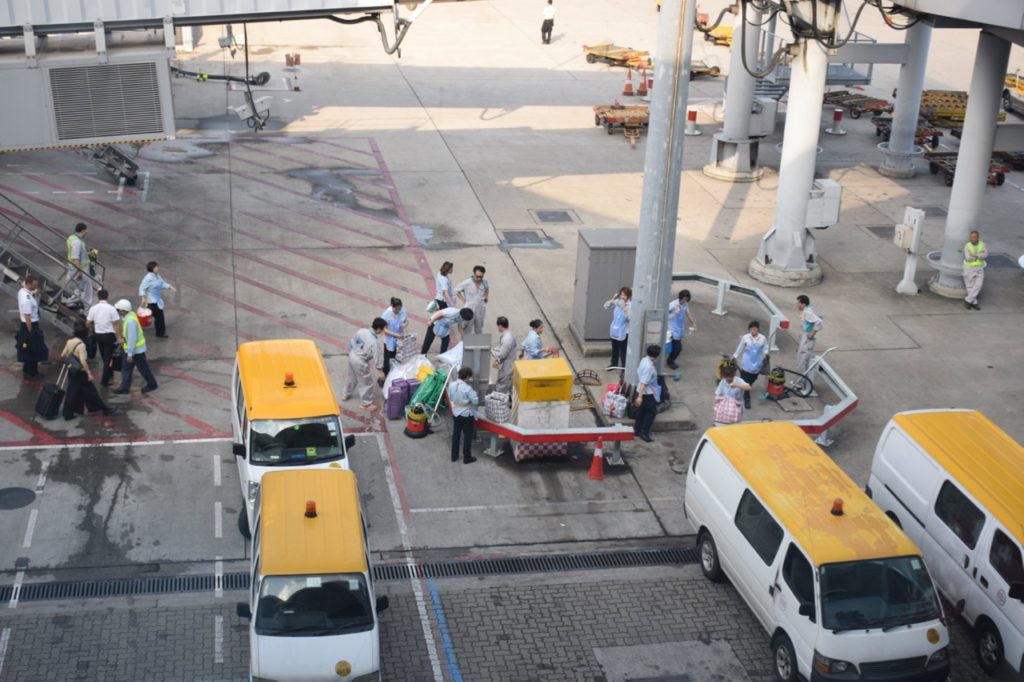Legacy Asian carriers are facing fierce competitions in the region, with low cost carriers offering significantly cheaper fares that appeal to ultra price-sensitive customers. Singapore Airlines has their Scoot venture, which is aimed at the leisure market and traditional LCC audience. Cathay Pacific is feeling some of the pressure, especially since they had been hedging fuel and losing money from that.
According to the South China Morning Post, Cathay Pacific will be reducing their aircraft deep-cleaning frequency. Currently, the airline adheres to a fixed 14-day cleaning schedule, but will soon move to a flexible schedule, deep cleaning aircraft every 3 to 4 weeks. Presumably, this change will help the airline save on maintenance cost, and open up a bit more flexibility in terms of aircraft utilization. Rupert Hogg, Cathay Pacific’s COO, responded by saying, “some people might think it is a cost-cutting measure but of course we have no intention of flying dirty aircraft”. Well, he’s not exactly denying that it’s a cost cutting measure..
To my knowledge, the aircraft galleys and “common areas” are cleaned after every flight. For example, I was on a Cathay Pacific’s flight from New York to Hong Kong—the one that makes a stop in Vancouver. Janitorial crew came onboard while we stopped in Vancouver to vacuum the carpet, etc. This post-flight cleaning isn’t going away, to my knowledge.

Cathay Pacific cleaning crew at Hong Kong International Airport (HKG). Photo by the author.
According to the same SCMP article, the deep cleaning process is pretty involved, and takes 3 – 4 hours.
It entails lifting up seat cushions and cleaning and disinfecting them as well as wiping and cleaning the seat frame. Seat backs, TV screens, plastic storage bins and tray tables are also cleaned. Windows, closets and overhead bins are wiped, cabin crew galleys are more intensively cleaned and toilets are dismantled and thoroughly cleaned.
With the reduction in the deep-cleaning frequency, Cathay Pacific says that they will increase the number of work hours per deep clean. To be honest, a 4-week interval doesn’t seem all that outrageous. Though of course the results of the process mean much more than the number of hours spent or the frequency of it.
“Deep cleaning” might mean different things for different airlines, but for comparison’s sake, American cleans their aircraft carpets and tray tables every 30 days. Delta does so every 90 to 100 days, when their aircraft undergo regular maintenance. Meanwhile, United deep-cleans their aircraft every 35 to 55 days, depending on the aircraft type.
Hey, I know an airline that might benefit from increasing their deep cleaning frequency and perhaps lifting up seat cushions while doing so…
The responses below are not provided or commissioned by the bank advertiser. Responses have not been reviewed, approved or otherwise endorsed by the bank advertiser. It is not the bank advertiser's responsibility to ensure all posts and/or questions are answered.
4 comments
the last paragraph shows another area usa is leading the race to the bottom.
the past couple of yrs i have read about labor issues and seen flight quality recede a bit. for the F and J, the food, quality of printed material, amenity kit all droped a notch.
Pretty soon the airlines in the US will only clean annually.
#racetothebottom
i wonder how many of you folks “deep clean” your houses? i doubt its every 3-5 weeks like Cathay is proposing
Our houses are not being visited by ~20,000 people every 3-5 weeks.
Willing to bet most of us “deep clean” it after hosting even 10% of the daily flyers on a wide body plane.